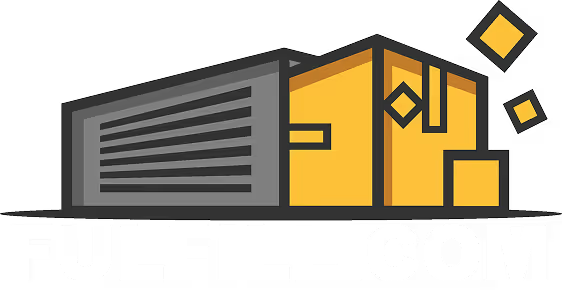Quick Jump
Choosing the right co-packer can make or break your CPG brand's success. This comprehensive guide reveals the critical factors to evaluate when selecting a manufacturing partner, from certifications and capacity to quality control and scalability.
Understanding the Co-Packer Landscape
The consumer packaged goods (CPG) industry relies heavily on co-packers (contract manufacturers) to bring products from concept to shelf. Whether you're a startup launching your first SKU or an established brand expanding your product line, selecting the right co-packing partner is one of the most critical decisions you'll make.
A co-packer does more than just manufacture your product—they become an extension of your brand, responsible for maintaining quality, meeting deadlines, and often helping navigate regulatory requirements. The wrong choice can lead to production delays, quality issues, and damaged customer relationships. The right partner, however, can accelerate your growth and help you scale efficiently.
Essential Certifications and Compliance
Food Safety Certifications
The foundation of any reputable co-packer is their commitment to food safety and regulatory compliance. Non-negotiable certifications include:
SQF (Safe Quality Food) Certification: This globally recognized certification demonstrates a facility's commitment to food safety and quality management. SQF-certified facilities undergo rigorous third-party audits and maintain comprehensive documentation systems.
FDA Registration and Compliance: Your co-packer must be registered with the FDA and comply with Current Good Manufacturing Practices (cGMPs). They should have a robust HARPC (Hazard Analysis and Risk-Based Preventive Controls) plan in place.
USDA Organic Certification: If you're producing organic products, ensure your co-packer maintains current USDA Organic certification. This includes proper segregation of organic and conventional ingredients and detailed record-keeping.
Specialized Certifications
Depending on your product category and target market, additional certifications may be crucial:
- Non-GMO Project Verified: Essential for brands targeting health-conscious consumers
- Gluten-Free Certification: Critical for allergen-free products
- Kosher and Halal Certifications: Important for reaching specific consumer segments
- BRC (British Retail Consortium) Certification: Often required for international distribution
Third-Party Audits and Insurance
Beyond certifications, evaluate the co-packer's audit history and insurance coverage:
- Request copies of recent third-party audit reports
- Verify adequate product liability insurance (minimum $2-5 million)
- Confirm they maintain recall insurance
- Review their track record with regulatory inspections
Production Capabilities and Capacity
Equipment and Technology
A co-packer's equipment directly impacts product quality, efficiency, and cost. Evaluate:
Production Line Capabilities: Ensure they have the specific equipment needed for your product type—whether it's high-speed filling lines, specialized mixing equipment, or custom packaging machinery.
Technology Integration: Modern co-packers should offer:
- Automated quality control systems
- Real-time production monitoring
- Lot tracking and traceability systems
- Integration with your inventory management systems
Flexibility for Innovation: As your brand grows, you'll likely introduce new products or packaging formats. Choose a co-packer with versatile equipment that can accommodate future innovations.
Capacity Planning
Understanding a co-packer's capacity is crucial for both current needs and future growth:
Current Utilization: A facility running at 90%+ capacity may struggle to accommodate your growth or handle seasonal spikes. Aim for partners operating at 60-75% capacity.
Minimum Order Quantities (MOQs): Balance MOQ requirements with your cash flow and storage capabilities. Typical MOQs range from:
- Beverages: 1,000-5,000 units
- Snack foods: 5,000-10,000 units
- Personal care products: 2,500-5,000 units
Scalability: Discuss production capacity at various growth stages. Can they handle a 10x increase in volume? What about seasonal variations?
Lead Times and Scheduling
Production scheduling flexibility can significantly impact your business:
- Standard lead times (typically 4-8 weeks)
- Rush order capabilities and associated costs
- Seasonal production planning
- Flexibility for product launches and promotions
Quality Control and Testing Protocols
In-House Quality Systems
A robust quality control program protects your brand reputation. Essential elements include:
Incoming Material Inspection: How do they verify raw material quality and specifications? Look for:
- Certificate of Analysis (COA) requirements
- Vendor qualification programs
- Raw material testing protocols
In-Process Controls: Quality checks throughout production prevent large-scale issues:
- Critical Control Point (CCP) monitoring
- Statistical Process Control (SPC) implementation
- Real-time quality data collection
- Line clearance procedures between products
Finished Product Testing: Comprehensive testing ensures products meet specifications:
- Microbiological testing protocols
- Nutritional verification
- Shelf-life validation studies
- Sensory evaluation programs
Laboratory Capabilities
Evaluate whether the co-packer has in-house lab facilities or reliable third-party partnerships:
- Microbiological testing capabilities
- Chemical and nutritional analysis
- Allergen testing protocols
- Environmental monitoring programs
Quality Documentation
Proper documentation is essential for traceability and continuous improvement:
- Batch production records
- Deviation and corrective action procedures
- Customer complaint handling systems
- Mock recall capabilities (test annually)
Location and Logistics Considerations
Geographic Strategy
The location of your co-packer significantly impacts costs and efficiency:
Proximity to Raw Materials: Closer to ingredient suppliers can reduce costs and lead times, especially for fresh or bulky ingredients.
Distribution Efficiency: Consider distance to your primary markets. A centrally located co-packer can reduce shipping costs by 15-25%.
Multi-Facility Networks: Larger co-packers with multiple locations offer redundancy and regional distribution advantages.
Transportation and Logistics
Evaluate the co-packer's logistics capabilities:
- On-site warehouse capacity and management
- Carrier relationships and freight rates
- Drop-ship capabilities for e-commerce
- Temperature-controlled storage and shipping (if needed)
Inventory Management
Efficient inventory management reduces working capital requirements:
- Raw material purchasing and storage policies
- Finished goods storage terms and fees
- Inventory management systems and visibility
- VMI (Vendor Managed Inventory) capabilities
Cost Structure and Pricing Transparency
Understanding the Full Cost Picture
Co-packer pricing involves multiple components beyond the per-unit cost:
Setup and Changeover Fees:
- Initial recipe development: $5,000-$25,000
- Production line setup: $500-$2,000 per run
- Changeover between flavors/SKUs: $250-$1,000
Per-Unit Production Costs: Typically includes:
- Labor and overhead allocation
- Equipment usage and depreciation
- Quality control and testing
- Basic packaging materials
Additional Service Fees:
- Raw material procurement: 3-10% markup
- Warehouse storage: $15-$25 per pallet/month
- Special packaging or labeling: $0.10-$0.50 per unit
- Expedited production: 25-50% premium
Volume-Based Pricing
Most co-packers offer tiered pricing based on volume commitments:
- Startup tier: Higher per-unit costs, lower MOQs
- Growth tier: 10-20% cost reduction at 5-10x volume
- Enterprise tier: Optimal pricing at consistent high volumes
Hidden Costs to Consider
Be aware of potential additional expenses:
- Minimum run charges if you don't meet MOQs
- Storage fees for slow-moving inventory
- Rework costs for specification changes
- Certification maintenance fees
- Annual price increases (typically 2-5%)
Communication and Relationship Management
Project Management Excellence
Effective communication can prevent costly mistakes and delays:
Dedicated Account Management: Look for co-packers that provide:
- Single point of contact for all communications
- Regular production updates and scheduling calls
- Proactive issue identification and resolution
- Quarterly business reviews
Technology Platforms: Modern co-packers offer digital tools for:
- Real-time production tracking
- Inventory visibility
- Quality data access
- Document management
Cultural Fit and Values Alignment
The best co-packer relationships extend beyond transactional interactions:
- Shared commitment to quality and safety
- Similar values regarding sustainability and social responsibility
- Willingness to grow with your brand
- Transparency in operations and pricing
Flexibility and Problem-Solving
Evaluate how potential partners handle challenges:
- Response time to inquiries (aim for <24 hours)
- Willingness to accommodate special requests
- Track record of meeting deadlines
- Approach to resolving quality issues
Scalability and Growth Support
Planning for Success
Your co-packer should be a partner in your growth journey:
Capacity Expansion Plans: Understand their growth strategy:
- Equipment investment timelines
- Facility expansion capabilities
- Additional shift availability
- Co-investment opportunities for dedicated lines
New Product Development Support: Look for partners offering:
- R&D kitchen facilities
- Formulation expertise
- Regulatory guidance
- Packaging innovation capabilities
Market Expansion Assistance: Experienced co-packers can help with:
- Export documentation and requirements
- Regional certification needs
- Shelf-life extension strategies
- Cost optimization for new markets
Financial Stability
Ensure your co-packer can support long-term growth:
- Review financial statements or credit reports
- Understand ownership structure and stability
- Evaluate capital investment history
- Assess customer concentration risk
Red Flags to Avoid
Warning Signs in the Selection Process
Be cautious of co-packers exhibiting these characteristics:
Lack of Transparency:
- Reluctance to provide facility tours
- Unwillingness to share audit reports
- Vague pricing structures
- Limited reference availability
Operational Concerns:
- Outdated or poorly maintained equipment
- High employee turnover
- Frequent production delays
- Poor communication during evaluation
Quality Issues:
- History of recalls or regulatory violations
- Inadequate testing capabilities
- Resistance to quality requirements
- Poor housekeeping during facility visits
Deal Breakers
Some issues should immediately disqualify a potential partner:
- Expired or missing critical certifications
- Unresolved FDA warning letters
- Inadequate insurance coverage
- Financial instability or bankruptcy history
- Ethical or sustainability concerns
Making the Final Decision
Evaluation Framework
Create a systematic approach to compare potential partners:
Weighted Scoring System: Assign importance to key factors:
- Quality and certifications (25-30%)
- Cost and value (20-25%)
- Capacity and scalability (20%)
- Location and logistics (15%)
- Communication and culture (10-15%)
Reference Checks: Contact 3-5 current customers to verify:
- On-time delivery performance
- Quality consistency
- Communication effectiveness
- Problem resolution approach
- Overall satisfaction
Pilot Production Runs: Before committing long-term:
- Conduct small test runs
- Evaluate product quality
- Test communication systems
- Verify cost estimates
Contract Negotiation
Protect your interests with comprehensive agreements:
Key Contract Terms:
- Intellectual property protection
- Confidentiality and non-compete clauses
- Quality specifications and remedies
- Termination conditions and notice periods
- Price adjustment mechanisms
Performance Metrics: Include measurable KPIs:
- On-time delivery rate (target: 95%+)
- Quality acceptance rate (target: 98%+)
- Order accuracy (target: 99%+)
- Communication response time (target: <24 hours)
Conclusion: Your Path to the Perfect Co-Packer Partnership
Selecting the right co-packer is a critical decision that impacts every aspect of your CPG business—from product quality and customer satisfaction to profitability and growth potential. By thoroughly evaluating potential partners across all the dimensions outlined in this guide, you'll be well-positioned to make an informed decision that supports your brand's long-term success.
Remember that the lowest-cost option is rarely the best value. Focus on finding a partner who:
- Maintains the highest quality standards
- Offers scalability for your growth
- Communicates transparently and proactively
- Aligns with your brand values
- Provides fair and transparent pricing
The right co-packer becomes more than a vendor—they become a strategic partner in your brand's journey. Take the time to thoroughly evaluate your options, visit facilities, check references, and ensure alignment on all critical factors.
Ready to find your ideal manufacturing partner? Looking to get matched with the perfect co-packer for your CPG brand? Get matched in 4 easy steps.

About the Author
The author brings unique dual-perspective expertise to CPG manufacturing partnerships, having successfully built and operated a third-party logistics (3PL) company that was later acquired, while also serving as an advisor to numerous consumer packaged goods brands. This rare combination of supply chain operations experience and brand-side consulting provides invaluable insights into both sides of the co-packer relationship—understanding the operational realities manufacturers face while knowing exactly what growing CPG brands need to succeed. Having navigated the complexities of scaling logistics operations and guided brands through critical manufacturing decisions, the author offers practical, tested advice for building successful co-packer partnerships.










